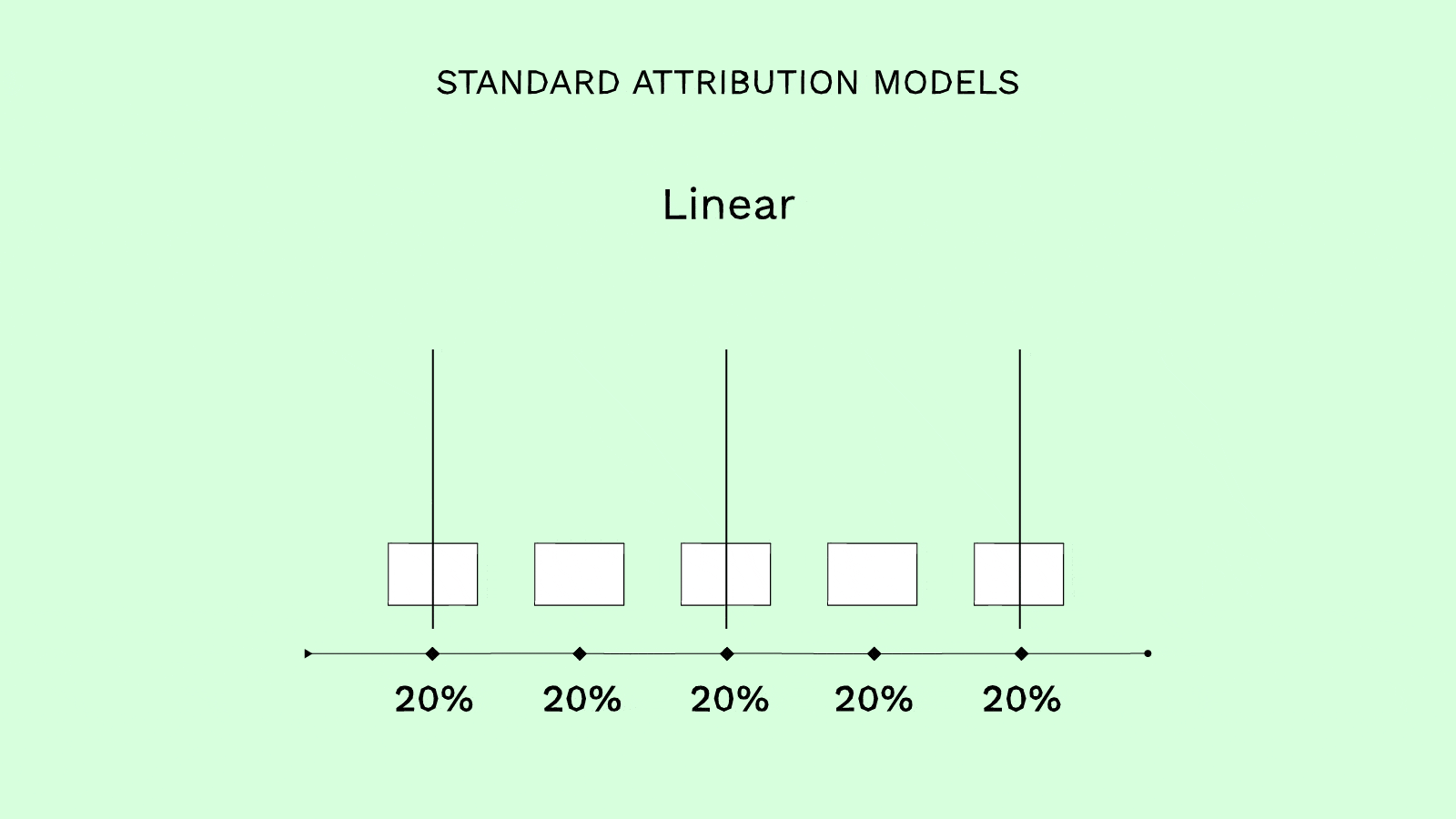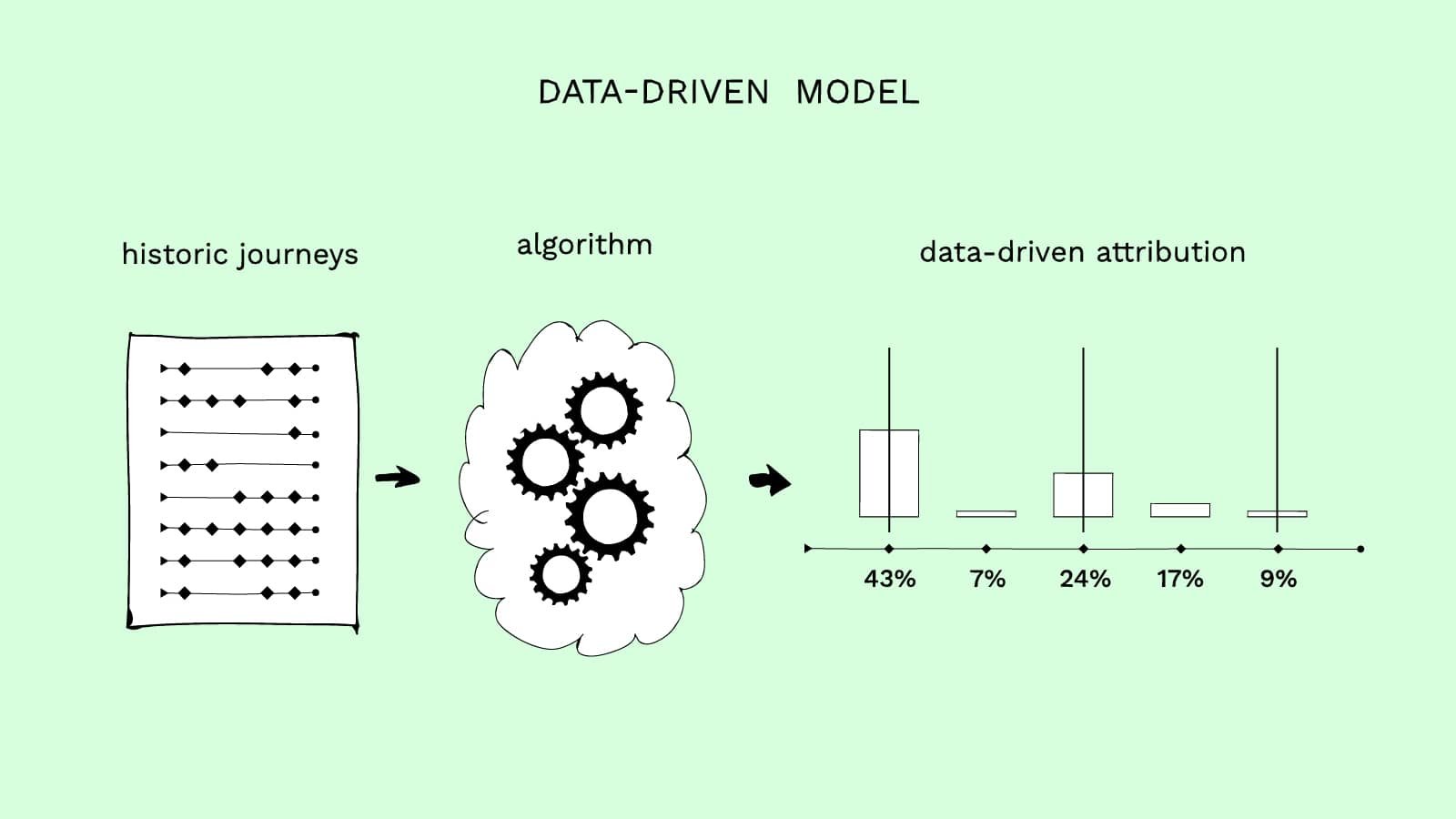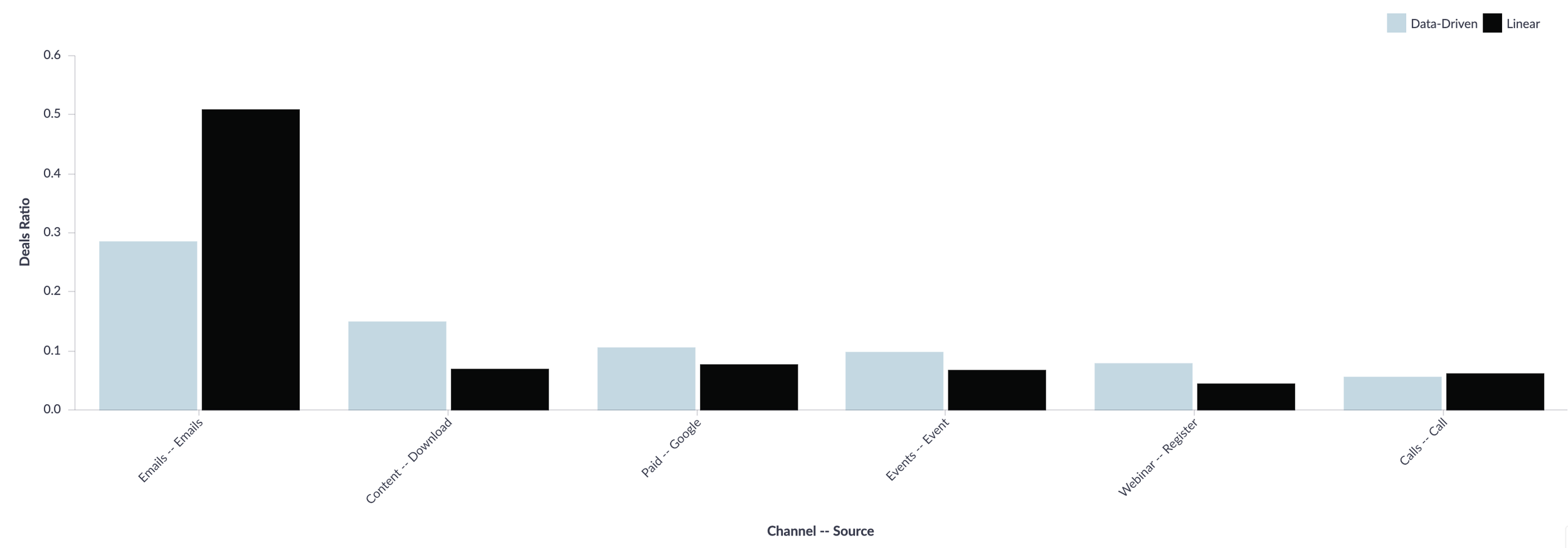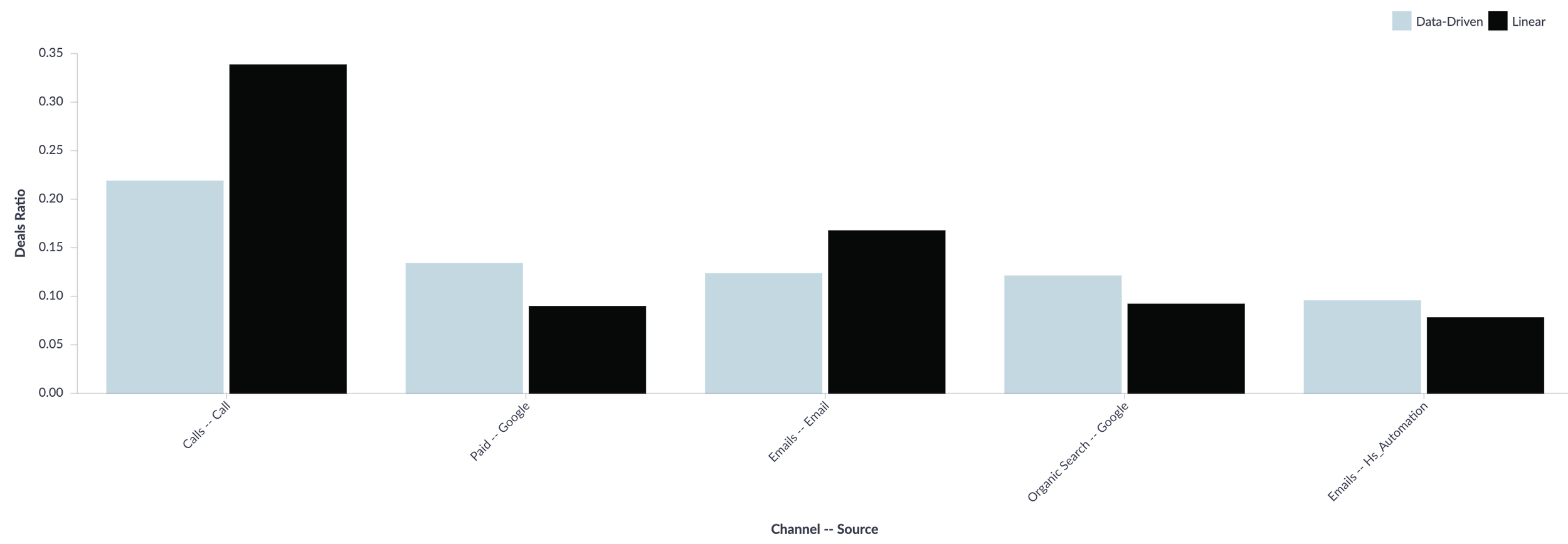Dreamdata launches data-driven attribution for B2B
Data-driven attribution has landed! Dreamdata users will now be able to let data decide which touches matter most in your journey.
Data-driven attribution modelling gives an unbiased view of what go-to-market efforts really drive growth; helping you optimise and scale with more confidence.
In this post, we’re giving you the full run-down on what data-driven attribution is and why it matters.
Contents:
Intro to data-driven attribution
Data-driven attribution: how it works
Why is data-driven attribution important?
Why use data-driven attribution
Comparing data-driven and linear models (on real data)
Intro to data-driven attribution: let the data do the talking
Definition: Data-driven attribution is a multi-touch attribution model which uses existing customer journey data to distribute credit for deals.
Broadly speaking there are two types of attribution models:
Single-touch models - first-touch and last-touch attribution - and multi-touch models - linear, U-shaped, W-shaped, etc.
Data-driven attribution sits within the second group.
The standard multi-touch attribution models we are all accustomed to are ‘rule-based’ models. This means that they attribute credit to touchpoints based on when they occur in the tracked journey.
Depending on the model selected, credit will be distributed differently.
For instance, a U-shaped multi-touch model splits the credit equally to the first and last touches, a linear model distributes credit equally across all touches, and a W-shaped model gives credit to the first, last and a chosen middle touchpoint.
But are all touches really equal? Are the first and last touches the most important?
Deciding which model to apply to your data requires an arbitrary decision.
That is, with a purpose in mind, the user determines which model makes the most sense to apply across customer journeys. Typically, this will depend on the user’s role within the organisation.
But these standard rules, in particular the linear model, attribute value to touches that may or may not really influence the purchase decision.
For example, a sales call to edit a contract shouldn’t be credited as much as a demo which secured the purchase.
Data-driven attribution does away with these shortcomings and uses dynamic data and mathematical modelling (Markov chains) to indicate which touches are actually the ones that should get what weighting.
Here is how:
Data-driven Attribution models: how they work
First, all known customer journeys across all channels are mapped, and the frequency of touchpoints computed. This data then paints what’s called the typical journey map.
Once the typical journey map is created, the attribution weight of each channel is calculated by removing individual channels from the typical journey map and comparing the relative effects on the overall journey with each other.
We call this the removal effect. The higher the removal effect is, the higher the weight assigned to the particular channel is.
The typical journey map and the removal effect are re-calculated multiple times daily as new customer journeys are collected and included in the model. Data-Driven attribution becomes more accurate with every additional customer journey.
If you use Dreamdata, you can choose to run data-driven attribution per pipeline stage - especially relevant for those users who don’t have enough velocity of won deals.
In this case, the model will decide on the weighting based on historic data on these exact stages - guaranteeing accuracy.
You can dig deeper into how our data-driven modelling works in this article.
Why are data-driven attribution models important?
Right so what does all this mean in practice? Why should you care?
There are three primary reasons why data-driven attribution matters to the B2B go-to-market org:
Firstly, as a multi-touch model, it helps companies move away from single-touch attribution, or even no attribution, setups. Single source attribution offers a very limited perspective of the B2B customer journey and so is limited in how much it can help a B2B go-to-market team scale and grow with confidence.
You can read more into why this matters for the B2B go-to-market org in this post.
Secondly, by dynamically analysing your customer journeys, data-driven attribution offers a more accurate picture of what matters most in your customer journey.
This enables you to have a better understanding of the typical journey, and the touches that have the biggest impact on your typical customer.
Thirdly, attribution models are what stand behind the ROI figures of your activities. As such the data-driven attribution represents a fairer view of what has helped push your leads down the pipeline to revenue.
From this B2B go-to-market teams are better able to plan, forecast and allocate budgets.
When to use data-driven attribution models?
Data-driven attribution has two principal use cases:
Deep analysis of the customer journey. Data-driven attribution reveals what the typical journey looks like and exposes the most valuable touches in taking deals over the line.
This is especially useful in longer journeys where it is not clear what action is the most important.
From this, RevOps and senior decision makers can then better allocate budget, forecast and prepare go-to-market strategies.
Optimising performance. At a more operational level, for go-to-market professionals with a multi-touch attribution purpose in mind, data-driven modelling means an unbiased and more accurate projection of the customer journey, as well as an end to fumbling around with different models.
It allows users to attribute more weight to the touchpoints that are typically influencing the customer journeys, and mould campaigns and efforts accordingly.
Comparing Data-driven attribution models to Linear (with real data)
So what does data-driven attribution modelling look like in practice?
Below are two anonymised sets of real customer journey data, comparing the data-driven model to the linear.
Data-driven vs. linear attribution example 1
In this first example, we see how the data-driven modelling (based on all previous customer journeys) has downplayed the importance of emails in the journey - although they still make the biggest contribution to this deal.
We then see more attribution towards Content, Paid, Events and Webinars.
Data-driven vs. linear attribution example 2
In this example, we see how this company’s calls and emails are given less weighting. Instead, we see Paid (Google Search) and Organic touches being given more credit.
In both these examples, we see how data-driven better informs the user about the impact of their efforts. This in turn can help the go-to-market team better invest in their efforts moving forward.
Data-driven attribution in Dreamdata
Dreamdata is making the data-driven attribution model across all stages and dashboards - as with the rest of the attribution models available. Which means you can continue using other models alongside data-driven as your needs require.
Dreamdata also allows for further customization of the data-driven models by giving the user the ability to exclude touchpoints from the model. Leaving the model to only consider things that the user knows potentially cause sales.
Who gets access to data-driven attribution?
Data-driven attribution will be available for Dreamdata Business Tier accounts. For current Business accounts, it will remain free until renewal comes up.
If you’re on any other account tier you can reach out to Dreamdata to request a trial.
Is there a data requirement?
No. There is no specific data requirement outside the standard data cleaning and transformation which the Dreamdata data platform does out-of-the-box.
In terms of the amount of data however, as with other data-driven models, the more data there is the more accurate the machine-learning algorithm becomes.
Data-driven: key takeaways
Data-driven attribution works dynamically by using the accumulated data from all customer journeys to determine which touchpoints matter most.
Data-driven attribution increases in accuracy over time - as more journeys are included into the mix.
Data-driven attribution is a direct competitor to the linear multi-touch attribution model.
Data-driven attribution does not require specific amounts of data to work. However, low data amount will make the Data-driven attribution model similar to a Linear Model.
Data-driven attribution does not include human input to assign attribution to particular touchpoints. Instead, an advanced mathematical model is used.
Data-driven attribution can be used by go-to-market teams to learn about their typical customer journey and to optimise performance based on the activities that have the biggest impact.






